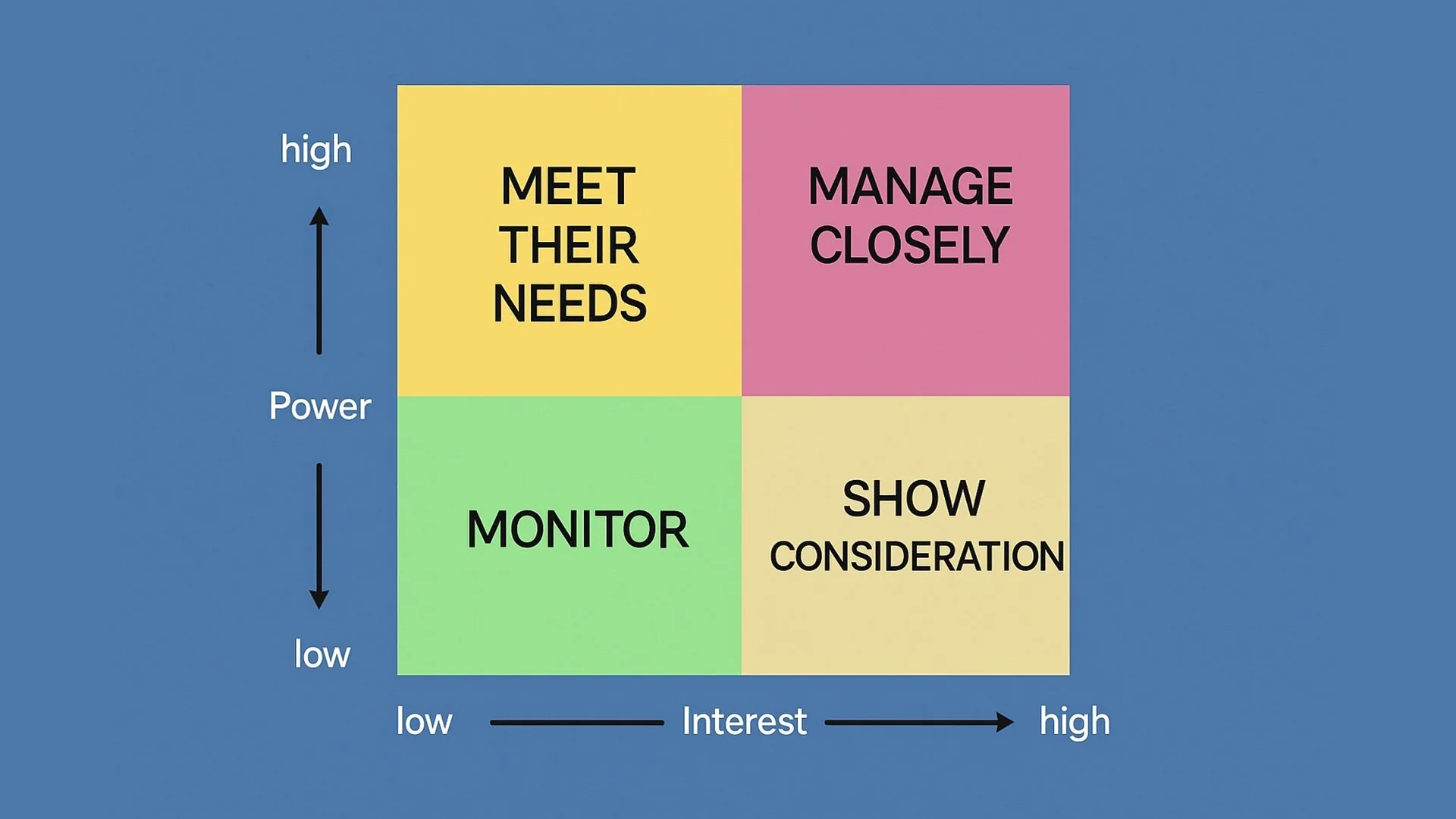High Interest, High Impact, and the Value of the Power Grid
Stakeholder analysis
How completing a power grid can free you from the purgatory of crowd-pleasing
So you’ve started a project and identified the key stakeholders. What comes next? Either, A) You complete a stakeholder analysis, or, B) You subject yourself to the long and arduous process of trying to please everyone equally, an enterprise that’s usually doomed to failure.
And yes, I’m oversimplifying a little. Small, simple projects with a limited number of contingent personalities may not warrant this level of scrutiny. However, for large projects—and especially ones at large companies—a stakeholder analysis can save massive amounts of heartache.
A great first line of defense? Creating a “power grid”—a tool that balances a stakeholder’s interest with their ability to influence a project’s outcome. The grid assigns “Interest” to the X axis and “Power” to the Y axis. From these congruent values, you can create four distinct quadrants and assign each stakeholder to the quadrant that best matches their combined interest and influence.
QUADRANT 1: High Influence, High Interest (Upper Right)
These people have an outsized influence in the project and are highly interested in its outcome. They include project sponsors, key executives at the company, and (if applicable) regulatory authorities. You’ll want to keep them well-informed and engaged throughout the project life-cycle. Seek their input and feedback, involve them in the decision-making process, and address their concerns promptly and effectively. This is “the All-Star Quadrant,” so treat it accordingly.
QUADRANT 2: High Influence, Low Interest (Upper Left)
These individuals have considerable influence at the organizational level but don’t have the time or interest to involve themselves in the day-to-day project minutiae. Examples include senior managers who need to be briefed on project updates but may not be actively engaged. For this crowd, the Executive Summary is your best friend. Provide high-level recaps of the project’s progress, relay key decisions for their review, and do your best to focus on the way in which your work impacts organizational goals and objectives. However, what you don’t want to do is make progress dependent on their “yes” or their “no.” If you do, you’ll quickly run aground.
QUADRANT 3: Low Influence, High Interest (Bottom Right)
This is sometimes a tricky one. People in this quadrant are hugely interested in the project but have minimal ability to influence its outcome. You don’t want to alienate them by pushing them away, but you also don’t want to spend extensive time accommodating them if they can’t grease wheels for you in return. The solution? Do just enough to keep them engaged and informed, and no more. Communicate key updates and risk assessments. Answer their questions as promptly as you can. Lastly, help them feel included by seeking their feedback, but make clear (as constructively as possible) that their suggestions are literally just that.
QUADRANT 4: Low Influence, Low Interest (Bottom Left)
This quadrant includes lower-level employees and departments not directly impacted by the project. Provide them with general updates about the project’s overall progress, but refrain from inundating them with the kinds of details that they have neither the interest nor the influence to act upon. Maintain a rudimentary level of communication to keep them aware of your work, but otherwise leave them to their day-to-day responsibilities so you can get on with your own.
At the end of the day, no project is ever headache free, but the power grid and the stakeholder analysis are a great first step toward keeping your cranium as tranquil as possible.
